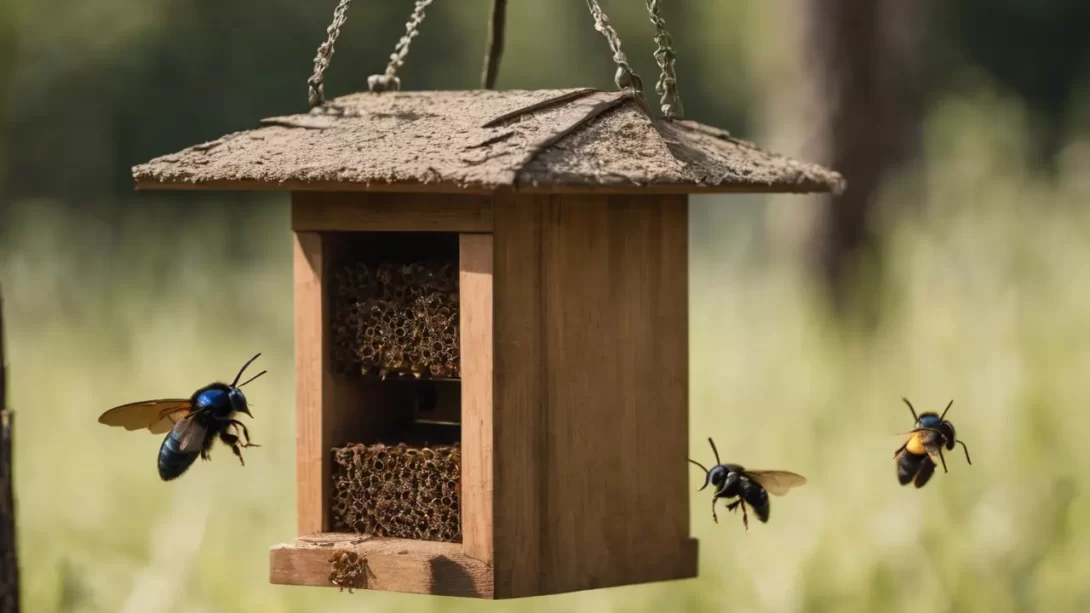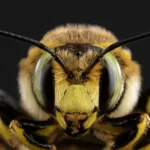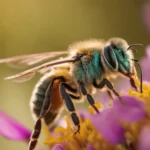Carpenter bees, while important for pollination, can become a nuisance when they burrow into wooden structures to build their nests. This behavior can cause significant damage to homes, decks, and outdoor furniture. As a non-toxic and effective solution, carpenter bee traps have gained popularity. This article explores how these traps work and how they can be used to manage carpenter bee populations effectively.
Carpenter Bees
Carpenter bees are large, solitary bees known for their ability to drill into wood to create nests. Unlike termites, they do not eat the wood, but they remove it to construct tunnels for their eggs. These bees are generally black and yellow and resemble bumblebees. They are most active during the warmer months and often return to the same wooden structures year after year, which can lead to cumulative damage. Identifying areas where carpenter bees are active is crucial for effective trap placement.
Design of Carpenter Bee Traps
Carpenter bee traps mimic the nesting holes that the bees naturally seek. A typical trap consists of a wooden block or box with pre-drilled holes that resemble the entrance to carpenter bee nests. These holes are angled upwards, leading into a containment chamber, usually a clear jar or plastic bottle, attached below the wooden block.
The key components of these traps are:
- Entrance Holes: Sized to specifically attract carpenter bees, usually about a half-inch in diameter.
- Chambers: A space within the wooden block where the bees are led.
- Bait or Attractants: While not always necessary, some traps may include substances that attract carpenter bees.
The design of these traps is based on the natural nesting behavior of carpenter bees, making them effective for capturing and containing these pests. In the next sections, we will delve into the mechanism of how these traps lure and trap carpenter bees, along with tips for their optimal placement and maintenance.
Mechanism of Action
The effectiveness of carpenter bee traps lies in their design, which exploits the natural nesting behavior of these bees. Here’s how the mechanism works:
Attraction to the Trap
Carpenter bees are naturally drawn to the pre-drilled holes in the trap, mistaking them for potential nesting sites. These holes are specifically sized to appeal to carpenter bees, making them more effective than random holes in wood.
Entry and Containment
Once a carpenter bee enters the hole, it follows the tunnel upwards, expecting to find a suitable nesting site. Instead, the bee finds itself in a larger containment chamber, typically a clear jar or plastic bottle. The transparency of the chamber is important as it disorients the bees, making it harder for them to find their way back to the entrance hole.
Inability to Escape
The upward angle of the holes and the structure of the chamber make it difficult for the bees to navigate back out. In their attempt to escape, they typically move upwards towards the light, which keeps them trapped in the containment chamber. The design ensures that once inside, the bees cannot easily find their way out.
Placement and Maintenance of Carpenter Bee Traps
Ideal Locations
To maximize the effectiveness of the traps, placement is key. Traps should be hung near areas where carpenter bee activity is most apparent, such as under eaves, near decks, or around wooden structures where you’ve noticed drilling or buzzing. The height at which the traps are placed can also play a role; they tend to be more effective when hung at the same level as the bee activity.
Maintenance Tips
Regular maintenance of the trap is important for ongoing effectiveness. This includes periodically checking the trap and emptying it when it becomes full of bees. Cleaning the trap and replacing the containment chamber when necessary can also maintain its attractiveness to the bees.
Environmental and Safety Considerations
When using carpenter bee traps, it’s important to consider their impact on the environment and safety. Carpenter bees play a role in pollination, so the goal is to manage them in areas where they cause damage, rather than completely eradicating them.
Environmental Impact
Carpenter bee traps are a non-toxic and environmentally friendly solution. They target only carpenter bees and do not harm other beneficial insects. This selective approach ensures that the broader ecosystem, especially pollinators like honeybees and bumblebees, is not negatively impacted.
Safety Precautions
Using carpenter bee traps is generally safe, as they do not involve chemicals or poisons. However, when placing or maintaining traps, it’s important to be mindful of your surroundings, especially if using ladders or working at heights. Also, when handling full traps, wear protective gloves to avoid potential stings from trapped bees.
Conclusion
Carpenter bee traps are an effective and environmentally conscious method for managing carpenter bee populations in areas where they cause damage. By mimicking natural nesting sites, these traps lure in carpenter bees and prevent their escape, reducing the likelihood of damage to wooden structures.
Placement and maintenance of the traps are crucial for their success. Installing them near known areas of bee activity and keeping them well-maintained will enhance their effectiveness. Importantly, these traps offer a non-toxic and safe way to manage carpenter bees without harming other beneficial insects, aligning with environmentally responsible pest management practices.
In summary, for those dealing with carpenter bee infestations, these traps provide a practical and eco-friendly solution. They help maintain the delicate balance between protecting our homes and structures and preserving the vital role these bees play in our ecosystems.




